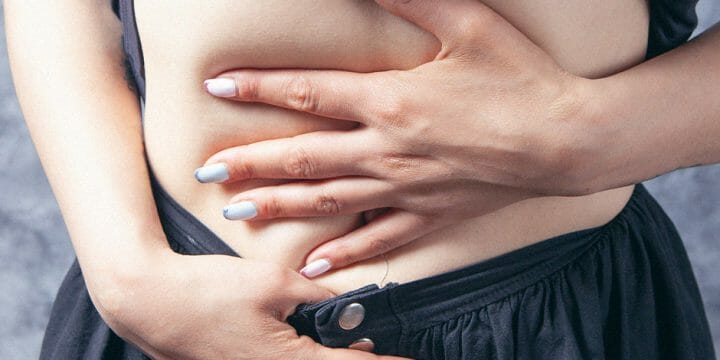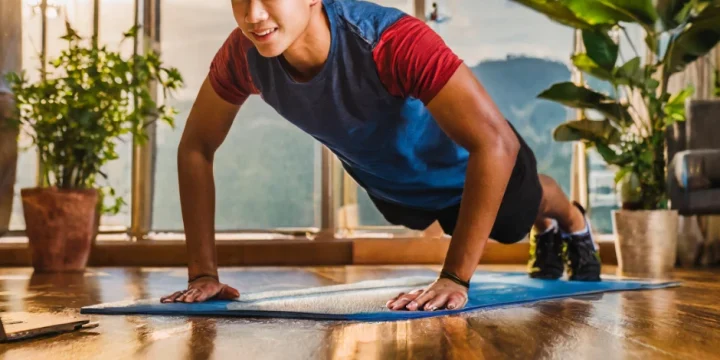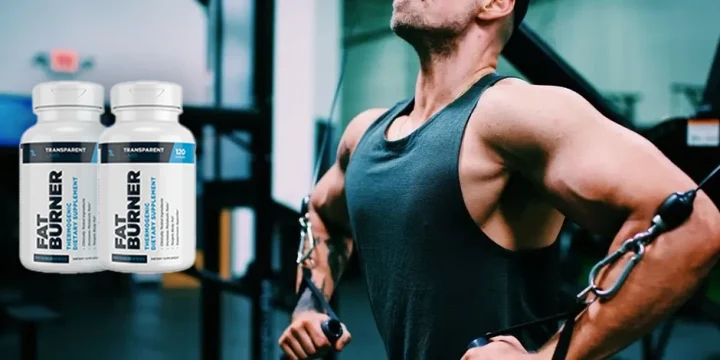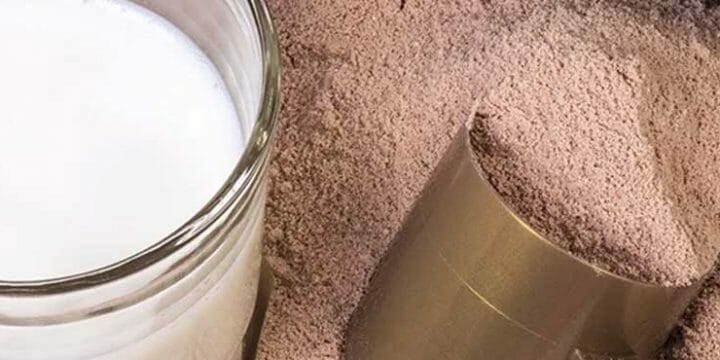As a practicing physician, I've observed a common misconception among patients aiming to lose weight—they often think of all fat as the same.
Understanding the factors behind weight gain and effective solutions requires distinguishing between two types of fat: visceral and subcutaneous. These fats differ in location and health impact, guiding informed approaches to weight management.
I conducted thorough research and consulted medical colleagues, compiling the essential data below to enhance your understanding of this topic.
Quick Summary
- Subcutaneous fat is the layer located just beneath your skin and serves as the palpable padding felt when you pinch your skin.
- This fat layer has a role in providing insulation to keep your body warm, and it also serves as a source of energy storage.
- In most people, approximately 90% of body fat is subcutaneous, and the remaining 10%, known as visceral fat, is situated beneath the abdominal wall.
- In my opinion, incorporating thermogenic fat burners into healthy eating and a regular exercise routine can fast-track the process of shedding unwanted fats.
What Is Subcutaneous Fat?
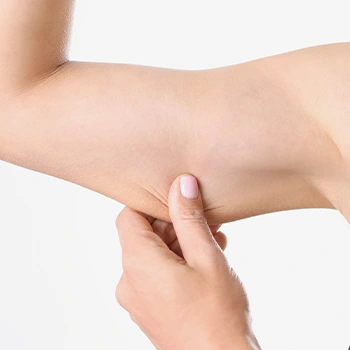
Subcutaneous fat is easily identified as the jiggly body fat just beneath the skin that can be pinched with your fingers., according to the National Institute of Health [1].
While it's essential to store a certain amount of subcutaneous fat for health, an excess of it may lead to health complications.
Moreover, research from BioMedCentral suggests that an excess of subcutaneous fat increases the risk of accumulating visceral fat, which is more hazardous as it surrounds vital organs [2].
Over many years, I have advised my patients to exercise regularly, eat balanced meals, and live a healthy lifestyle to maintain their preferred weight and body shape.
The Roles of Subcutaneous Fat
The roles of subcutaneous fat, as suggested by Medical News Today, extend beyond just fat content. This layer includes connective tissue, with fat cells connected by elastin and proteoglycans to maintain the skin's elasticity and firmness [3].
According to the National Institute of Health, subcutaneous fat plays crucial roles, including [4]:
- Energy storage: It stores energy to support an active lifestyle.
- Protecting muscles and bones: It shields them from potential injuries due to impacts.
- Temperature regulation: It insulates the body, helping in temperature regulation.
- Hormone production: It produces and stores hormones such as estrogen and leptin (satiety hormone).
Dangers Of Storing Too Much Subcutaneous Fat

Storing excessive subcutaneous fat poses health risks beyond cosmetic concerns, potentially leading to serious conditions such as diabetes, heart disease, and stroke, according to the Cleveland Clinic [5].
Furthermore, a study in the Journal of Clinical Endocrinology and Metabolism revealed that individuals accumulating over 33% of their body weight in the midsection face an increased risk of obesity-related diseases like insulin resistance [6].
Health problems linked to excess subcutaneous fat include:
- High blood pressure
- Heart disease and stroke
- Insulin resistance
- Type 2 diabetes
- Fatty liver disease
- Kidney disease
- Certain types of cancer
- Sleep apnea
How To Tell If You Have Too Much Subcutaneous Fat

To determine if you have excessive subcutaneous fat, various methods of measurement can be employed:
1. Body Mass Index (BMI)
The easiest way to measure subcutaneous fat is by calculating your Body Mass Index (BMI), a ratio of your weight to height, based on the National Institute of Health [7].
BMI categories include:
- Average Weight: BMI of 18.5 to 24.9
- Overweight: BMI of 25 to 29.9
- Obesity: BMI of 30 or higher
Although BMI includes visceral fat, it generally represents a smaller percentage in most people. Subcutaneous fat is a significant factor in body fat and can be a useful indicator of body composition.
Regular body fat assessments help monitor subcutaneous fat levels, enabling you to track progress and make necessary adjustments for a healthy weight.
2. The Old School Way - By Waist Size
According to Harvard School of Public Health, men with a waist size exceeding 40 inches and women with over 35 inches may face an elevated risk of obesity-related diseases [8].
To measure your waistline:
- From the top of your hip bone, wrap the tape measure around your body, aligned with your belly button.
- Ensure the tape is straight and not too tight at the back. Breathe normally during measurement.
- Exhale and note the number on the tape measure.
Related Article: Soft Vs Stiff Fat
How to Lose And Control Subcutaneous Fat Levels

While both kinds of fat contribute to the overall belly fat, the subcutaneous part can be hard to target because it doesn't respond to dieting as well as the visceral fat. Some of the best practices that can increase subcutaneous fat loss include:
Increasing Your Protein Intake
According to the American Journal of Clinical Nutrition, protein is vital for muscle growth, repair, and a healthy metabolism, promoting a feeling of fullness after eating [9].
While all protein sources contribute to increasing muscle mass, prioritize high-quality options such as organic eggs, grass-fed beef, wild-caught fish, and low-sugar dairy products.
Consider protein powders for convenience. Check our article on the best protein powder, where we've invested time in research and testing to identify the top option.
Drinking More Water
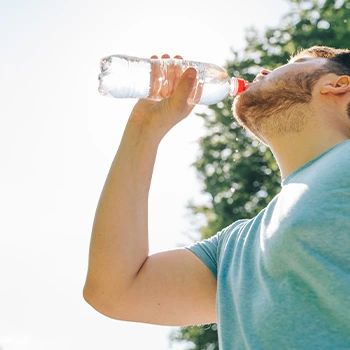
Based on research from Johns Hopkins University, increasing water intake is beneficial for weight loss [10].
Furthermore, the Mayo Clinic indicates that the recommended amount of water intake for adults is approximately 12 cups a day, varying with gender and height [11].
To determine your water needs:
- Take your weight in pounds, divide by 2, and this gives you the ounces to drink daily (e.g., 130 pounds = 65 ounces).
- Take your height in inches, divide by 12, and this provides the number of cups to drink daily (e.g., 68 inches = 8 cups).
Related Article: Best Weight Loss Drinks
"Thirst, which is triggered by mild dehydration, is often mistaken for hunger by the brain. You may be able to decrease appetite by drinking water if you are, in fact, low in water, not calories."
- Melina Jampolis, Certified Physician Nutrition Specialist
Combining Fasting With HIIT
HIIT workout for weight loss is an exercise routine that involves alternating between periods of high-intensity activity and low-intensity activity. Do it in a fasted state, and the results will be even more impressive.
The British Journal of Nutrition in 2016 suggests that aerobic exercise performed in the fasted state induces higher fat oxidation than exercise performed after meals [12].
Some of the benefits of fasted HIIT workouts are:
- Increased fat loss
- Improved insulin sensitivity
- Reduced inflammation
- Improved blood sugar regulation
FAQs
Is Visceral or Subcutaneous Fat Worse?
Visceral fat is considered more dangerous than subcutaneous fat. Both types of fat can create health problems such as high cholesterol, high blood pressure, and diabetes. But visceral fat has been linked to a higher risk for coronary heart disease and stroke.
Which Part of Body Fat Burns First?
The fat that burns first is the fat that you have stored around your organs. This is because it is the most easily accessible for your body to use as an energy source.
References:
- https://www.ncbi.nlm.nih.gov/pmc/articles/PMC6702693/
- https://nutritionandmetabolism.biomedcentral.com/articles/10.1186/s12986-019-0405-0
- https://www.medicalnewstoday.com/articles/subcutaneous-layer
- https://www.ncbi.nlm.nih.gov/pmc/articles/PMC3649613/
- https://my.clevelandclinic.org/health/diseases/23968-subcutaneous-fat
- https://academic.oup.com/jcem/article/103/9/3194/5005941
- https://www.nhlbi.nih.gov/health/educational/lose_wt/BMI/bmicalc.htm
- https://www.hsph.harvard.edu/obesity-prevention-source/obesity-definition/abdominal-obesity/
- https://pubmed.ncbi.nlm.nih.gov/25926512/
- https://hub.jhu.edu/at-work/2020/01/15/focus-on-wellness-drinking-more-water/
- https://www.mayoclinic.org/healthy-lifestyle/nutrition-and-healthy-eating/in-depth/water/art-20044256
- https://onlinelibrary.wiley.com/doi/abs/10.1111/sms.13054
About The Author
You May Also Like

